

Binocular Reviews Home > Digiscoping & Digibinning
What is Digiscoping?
Digiscoping
is the practice of placing the lens of a recording device like a camera (Digital, Analog Film or even your Smartphone Camera) behind the eyepiece of a spotting scope or other optical device to capture images or videos through it.
It can be an affordable way to take good and if you work at it, excellent photos without needing a long, usually very expensive telephoto lens and an expensive camera body.
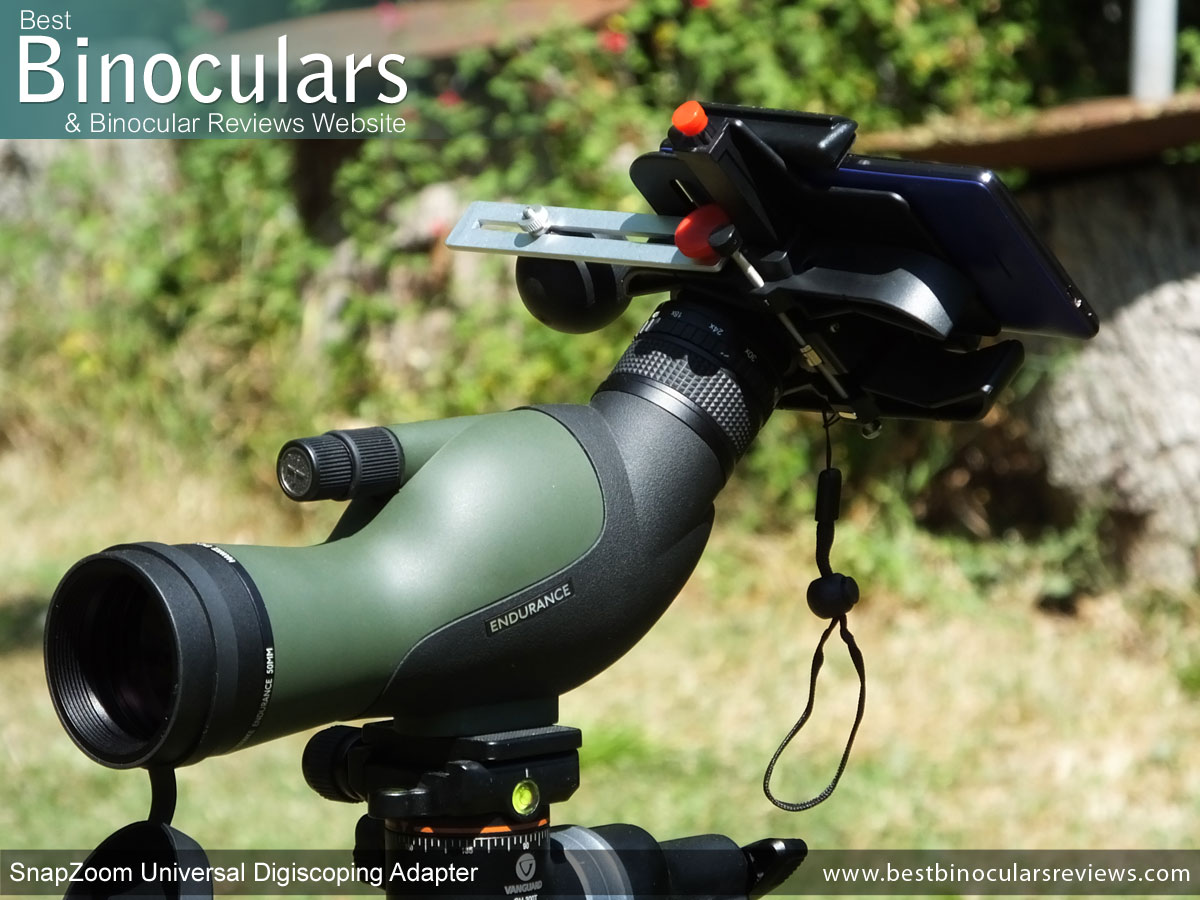
What is Digibinning?
Very similar to digiscoping, digibinning is the process of taking photos or video by holding or connecting a camera to the eyepiece of a binocular.
It's a technique that allows you to capture telephoto images and video without the need for a long, heavy spotting scope or telephoto lens or an expensive camera body. Essentially, it combines the convenience of binoculars with the ability to document your observations using a camera.
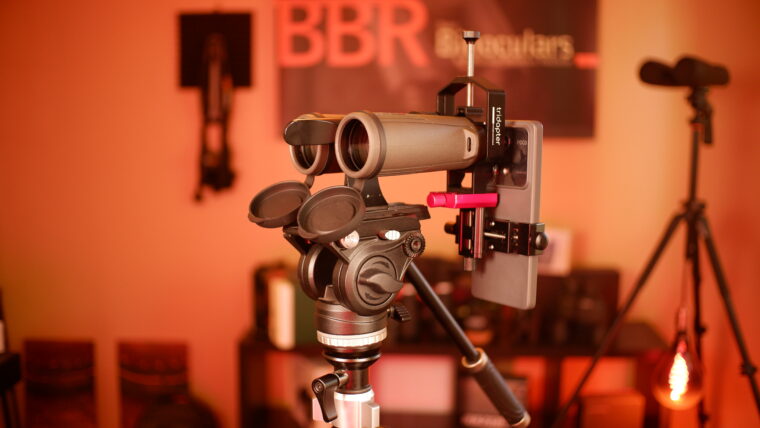
Main Advantages of Digibinning vs Digiscoping:
Smartphone Camera Adapters for Digiscoping & Digibinning
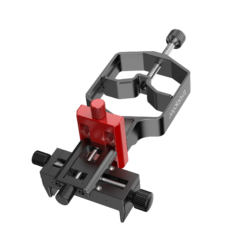 Part of my quest to find an digiscoping and digibinning adapter to use on the widest range of optics enabling me to use the footage captured in my reviews, this time I take an in-depth look at the Tridapter from Move Shoot Move. Its capabilities my experience using it with different binoculars and scopes.
Part of my quest to find an digiscoping and digibinning adapter to use on the widest range of optics enabling me to use the footage captured in my reviews, this time I take an in-depth look at the Tridapter from Move Shoot Move. Its capabilities my experience using it with different binoculars and scopes.
Summary:
The Move Shoot Move Tridapter is a high-precision smartphone adapter designed for digiscoping with scopes, binoculars, and will even work with monoculars and some night vision equipment.
Compatible with a wide range of optics and phones, and with its precise adjustments in 3-axis, I found it easy to setup, use and achieve good quality images with.
Image Stability: Achieving a steady image is crucial, often requiring a tripod or image-stabilized binoculars, especially for high magnification or in windy conditions. However another very very important aspect is the secure interface between your camera and your optics, which is one of the strengths of the Tridapter.
Overall I am super impressed with the Tridapter's build quality and performance, I was able to capture consistently good images and video with it on a wide range of optics and as such, it just about meets all criteria needed in my search for the ideal digibinning and digiscoping adapter, with only minor reservations.
Ease of use, stability, adjustability and the ability to interface with the widest range of binoculars, monoculars and spotting scopes possible. The BBR Quest for the Holy Grail of Digiscoping Adapters continues, this time I preview the MagView B1 Binocular Adapter which is specifically designed for digibinning to see if it has what it takes.
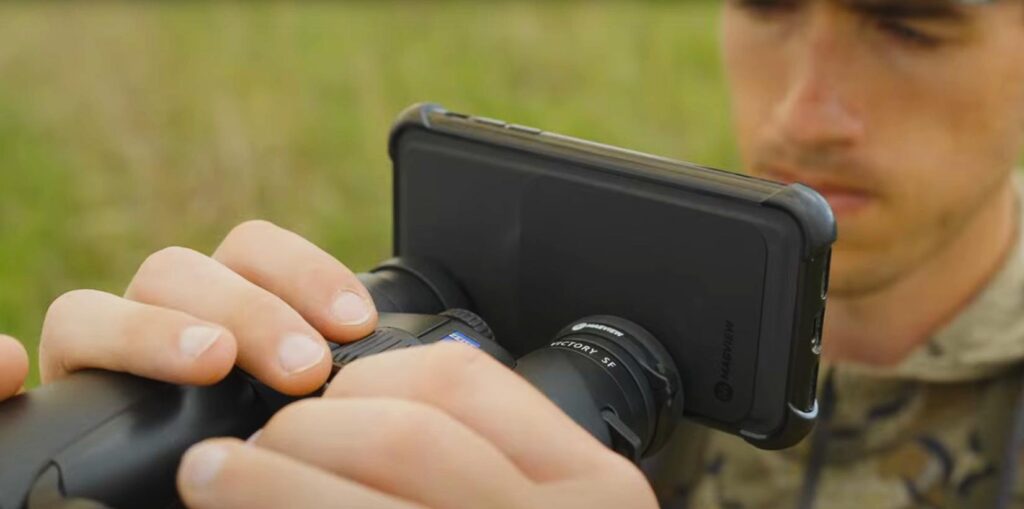
Mid-Range Spotting Scopes
BBR Reviews of Affordable High Performance Spotting Scopes Ideal for Digiscoping
 Priced at approximately $399 / £320 / €340, this mid-level spotting scope from Bresser offers exceptional value for money, and easily surpasses my expectations of what a scope should offer within this price range.
Priced at approximately $399 / £320 / €340, this mid-level spotting scope from Bresser offers exceptional value for money, and easily surpasses my expectations of what a scope should offer within this price range.
Indeed I often use this scope when for my personal digiscoping as it has many of the attributes you look for:
This includes a large 80mm lens and a versatile 20x to 60x zoom eyepiece, providing a broad field of view at lower magnifications and impressive image brightness and clarity, even at the higher power settings. Overall the image quality and brightness is excellent, making it a great option for digiscoping.
I have also found that this Bresser scope does really well at closer range (around 5 meters), making it an ideal choice for detailed studies, digiscoping of flowers and insects, and observing birds on nearby feeders. Many of my digiscoping examples were taken with this scope from a reasonably close range.
The ample eye relief not only helps if you wear glasses, but for digiscoping it gives you plenty of room to work with when setting up your camera behind the ocular lens making it much easier to get a full image.
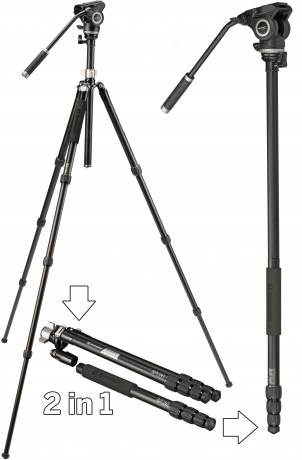 One of my personal favorites, I have found the Bresser BX-5 PRO Tripod to be very versatile over the years: As well as for digiscoping and digibinning, I use it for some of my videography, photography, general long-range terrestrial uses and even astronomy.
One of my personal favorites, I have found the Bresser BX-5 PRO Tripod to be very versatile over the years: As well as for digiscoping and digibinning, I use it for some of my videography, photography, general long-range terrestrial uses and even astronomy.
It's particularly well-suited for spotting scopes and larger binoculars due to its smooth pan-and-tilt head and sturdy build.
I like the user-friendly design and high-quality materials and am especially impressed by the fluid pan-and-tilt head, finding it exceptionally smooth for filming and scanning vast areas, which for filming when digiscoping is important.
An additional perk is the detachable leg, which allows the tripod to convert into a monopod for situations requiring a more compact setup and thus is an excellent option for steadying the view when digibinning.
Overall, the Bresser BX-5 PRO Video Tripod offers excellent value for money and I highly recommend it.
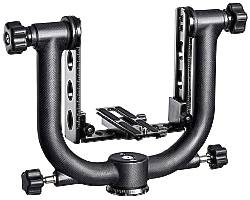 The MOVO GH1000 is a high-end, carbon fiber gimbal tripod head that stands out for its exceptional build quality and smooth functionality. Here's are a few reasons why it is one of my favourite pieces of gear, and why i will often use it when digiscoping/digibinning with large and/or heavy equipment:
The MOVO GH1000 is a high-end, carbon fiber gimbal tripod head that stands out for its exceptional build quality and smooth functionality. Here's are a few reasons why it is one of my favourite pieces of gear, and why i will often use it when digiscoping/digibinning with large and/or heavy equipment:
Sturdy Construction: The GH1000 is extremely well built using high-end materials, making it robust and capable of handling the weight of large cameras, spotting scopes, or binoculars. This is crucial for digiscoping, where stability is paramount for capturing clear images.
Smooth Movement: In my full review, I highlight the gimbal's exceptionally smooth pan and tilt movements, even under heavy loads. This allows for precise adjustments while viewing or tracking your target, once again this is essential for successful digiscoping, especially when making videos of moving subjects.
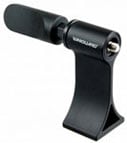 Binocular Tripod Adapters & Clamps for Digibinning
Binocular Tripod Adapters & Clamps for DigibinningBy using a binocular tripod mount or adapter you can very easily attach you binoculars to a tripod, monopod for a steadier view whilst digibinning.
As well as for digibinning, being able to fix your binoculars onto a tripod can be very useful if you use high power binoculars, have unsteady hands, or if you just want to set up your binoculars in a location and keep them there for quick access or sharing views.
The majority of binoculars utilize a standardized screw thread to facilitate attachment to tripods via adapters. Be aware however that a small number of binoculars may employ a proprietary mounting system or none at all.
Fortunately, for these non-standard binoculars, manufacturers offer specialized adapters and clamps that provide compatibility with tripods. While these solutions may require additional research to ensure a secure mount, it is possible to mount any binocular onto a tripod regardless of the specific binocular design. More details: Binocular Tripod Adapter & Clamp Guide.
What Do I Need for Digiscoping & Digibinning?
Digiscoping and Digibinning usually involves using either a digital single-lens reflex (DSLR) or Bridge camera with an attached lens, a fixed-lens point-and-shoot digital camera or, now more commonly simply the camera on your smartphone. Here are some key equipment options for digiscoping:
Whilst I may know the theory, what equipment is best to use and I am lucky to have a good selection to choose from, there is no doubt that digiscoping still takes a lot of skill, time and patience.
So using tennis as an example: just by having the best tennis shoes and racket, it does not mean you suddenly become Roger Federer or Novak Djokovic, there is still a lot of practice and skill needed to get to the level where you can win a grand slam!
However, I still enjoy digiscoping and digibinning and I am improving all the time. It is also something that I want to continue to do here on BBR as I eventually would like to use it as a way of comparing and sharing the views through the optics that I test with you for my reviews, rather than just describing it as I have always done in the past.
In the video below, I used the camera on my phone with the Move Shoot Move Digiscoping Adapter, which was connected to my Bresser Pirsch 9-27x56 Gen II Spotting Scope and the Bresser BX-5 PRO Video Tripod and then later ther is some more footage I captured using the KITE APC 18x50 Image Stabilization Binoculars, which were then fixed onto my Vanguard Abeo Pro 283CT Tripod which in turn has my MOVO GH1000 Gimbal Tripod Head on top of it.
As simple as it gets: Below is a demonstartion of what it is like digibinning "freestyle", and by that I mean simply bringing your camera up to they eyepiece and shooting footage that way. So digibining using a phone or a camera without mounting the binoculars onto a tripod or a smartphone adapter.
To demonstrate the difference a stable image can make I use the Opticron Imagic IS 16x42 Binoculars with the Image Stabilization turned on and then off to compare the difference:
Below is a selection of binoculars that I have recently fully rested and reviewed and which I feel would make ideal digibinning binoculars:
|
Improved Image-stabilisation, higher quality optics and several other unique features have in my opinion eliminated most of the downsides of using an Image-stabilized binocular and thus make these Kite APC binoculars a truly viable option as an everyday, general-use binocular.
Price: (6/6) Expensive Binoculars | |||||||||||||||
|
|
Aimed at those more serious about wildlife observation, birdwatching, and outdoor adventures, these very high-end Hawke binoculars feature APO lenses with ED glass elements, providing bright, excellent-quality views with minimal chromatic aberration. The compact design, magnesium chassis, and mostly metal components ensure durability. Price: (5/6) High Value Binoculars | |||||||||||||||
|
|
The Alpen Teton binocular incorporates many metal components and magnesium chassis that protect very high-end optics at a price well below what you would usually expect to pay for an Abbe-Koenig bino. The result is a tough, versatile instrument that delivers a high-quality image and what I consider an excellent low-light capability for a 10x42 binocular. Price: (5/6) High Value Binoculars | |||||||||||||||
|
|
7x50 binoculars that are designed for marine use, but because of several factors which I go through in detail in the review, including the use of roof prisms and a central focus wheel, I feel make them ideal for many other uses including astronomy, birding, wildlife observation and more.
Price: (3/6) Mid Priced Binoculars | |||||||||||||||
|
|
Magnesium Chassis, Metal Components, Field Flattening Lenses, Extra Low Dispersion Glass, Phase Corrected, Dielectric Coated Prisms... With most of the features and components that you would expect from a high-end binocular, these Vixen Osprey binoculars are priced at a level that places them amongst many of the top mid-level binoculars which is impressive. Price: (4/6) Mid-High Value Binoculars | |||||||||||||||
|
|
Excellent value for money 8x42 binoculars that are both reliable and lightweight.
Highlights include a surprisingly good image quality and brightness, Multi-Coated Optical system with BAK-4 Roof Prisms, and a wide field of view making them a good option for the birder, outdoors, or nature enthusiast shopping on a budget. Price: (2/6) Low Cost Binoculars | |||||||||||||||
|
|
Assembled in the US using Japanese-made components, these Maven B Series binoculars form part of Maven Optic's elite line of optics that have evolved from their award-winning B.1 Binoculars. Combining a magnesium chassis with metal components, a fully multi-coated optical system that includes ED glass lenses and Dielectric components, this 50mm model is both strong & lightweight and delivers an extremely bright high-quality view for a 12x50 binocular. Price: (5/6) High Value Binoculars | |||||||||||||||
|
|
Produced by Levenhuk, but endorsed by the Discovery Channe, these low-costing classically designed roof prism binoculars with large(ish) 50mm lenses offer a good low light performance with a reasonably powerful 10x magnification.
Price: (2/6) Low Cost Binoculars | |||||||||||||||
|
|
Updated from the B.1 series, the 10x42 B1.2 binoculars are smaller, more lightweight, come with improved optics, a much wider field of view, longer eye-relief, a closer minimum focus distance as well as other improvements. The fact that Maven Optics has managed to do all this and keep the cost at the same level results in a high-performance binocular with an incredible performance to price ratio. Price: (5/6) High Value Binoculars | |||||||||||||||
|
|
Fujinon HC 8x42 binocular is outstanding and dare I say it, beautiful pair of optics that certainly stands out from the crowd. I especially like the very wide field of view, which when combined with the excellent quality optics and resulting superb image quality means that you are presented with a view that is just about as good as it gets in both good and low light conditions. Price: (5/6) High Value Binoculars | |||||||||||||||
|
|
Extremely high-quality binoculars designed in Germany, made using premium class optics and components in Japan. Standout features include a Magnesium housing, fully machined aluminum rotary eyecups, a focus wheel with an integrated & lockable diopter adjuster, Dielectric coated Schmidt-Pechan roof prisms, Double HD glass lenses with hydrophobic exterior coatings. Price: (5/6) High Value Binoculars | |||||||||||||||
|
|
With 2 degrees of correction, these 16x42 Kite APC Image Stabilised Binoculars offer a lightweight and compact alternative to a high-powered binocular and tripod combination making them extremely useful in a wide variety of uses.
Price: (5/6) High Value Binoculars |
|
For the most part, these high power, long range binoculars from Vortex manage to achieve that very difficult balancing act of a reasonably priced, reasonably high performance binocular that delivers a bright, high-quality image in combination with a high magnification. As well as the instrument, the level and sheer number of included accessories is also impressive... Price: (4/6) Mid-High Value Binoculars | |||||||||||||||
|
|
Lightweight, low-cost 12x50 binoculars with an IPX7 waterproof and fogproof construction. Optics are fully multi-coated and the BaK-4 roof prisms are phase corrected. Price: (2/6) Low Cost Binoculars | |||||||||||||||
|
|
With ergonomic features like an open bridge body design and optical features like high-performance ED glass lens elements and dielectric coatings on the Barium-Kron glass roof prisms, this 8x42mm version of the Pirsch ED binocular from the German Optics company Bresser combine a high level of components with an excellent build quality to deliver a binocular with an excellent overall performance at a very reasonable price.
Price: (4/6) Mid-High Value Binoculars | |||||||||||||||
|
|
Super high powered binoculars with an equally high level of renowned Japanese optics, coatings, components and a build quality to match. The 18x56 Maven B5 binocular is designed to deliver high quality, highly detailed views a long distances and all at a price well under that of most other "alpha" level instruments. Price: (6/6) Expensive Binoculars | |||||||||||||||
|
|
Very high-end, long range, long-distance binoculars, the 15x56 Swarovski SLC HD has gained a significant reputation among hunters, in particular, for its quality and low light performance. My interest came from a desire for a high magnification binocular for coastal and wetland bird watching: Whilst most bird watchers will use spotting scopes, I wanted to see how a high power binocular would perform as an alternative. Price: (6/6) Expensive Binoculars | |||||||||||||||
|
|
Ideal long-range terrestrial and astronomy binoculars, these 15x70 Bresser Spezial Astro SF binoculars combine a fully multi-coated optical system with quality BaK-4 Porro prisms and a tough water and fog proof aluminum housing that, in turn, deliver a quality of view and user experience that is well above average. Far from just being good for stargazing, viewing planets, the moon and general astronomy at night-time, I would also highly recommend these to anyone wanting a higher power binocular to mount onto a tripod and look out over the ocean, a lake or onto the mountains during the day. Price: (3/6) Mid Priced Binoculars | |||||||||||||||
|
More >> Compare Binoculars on BBR.